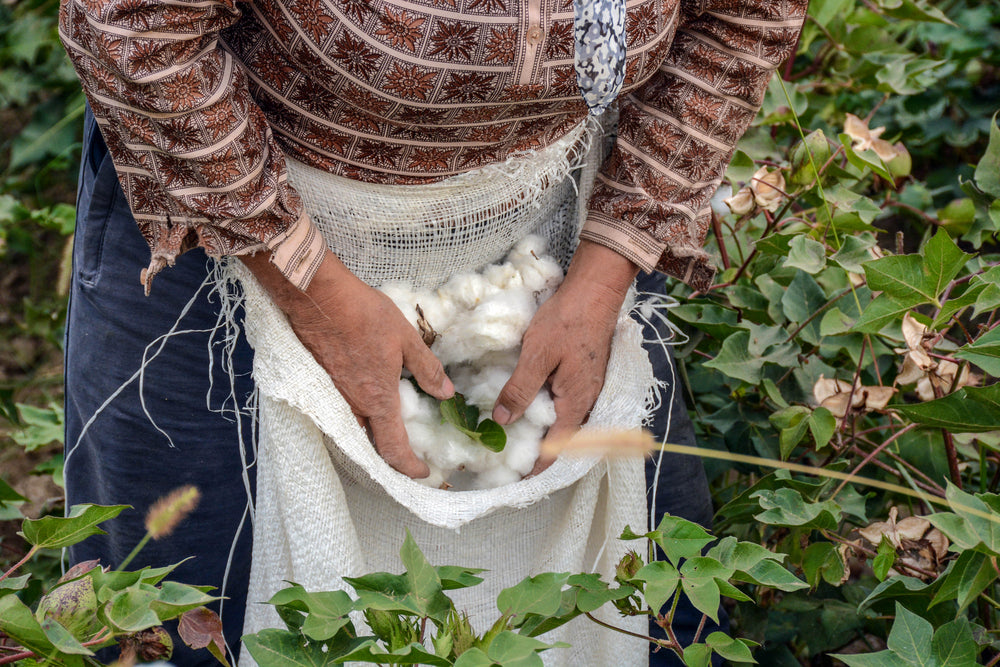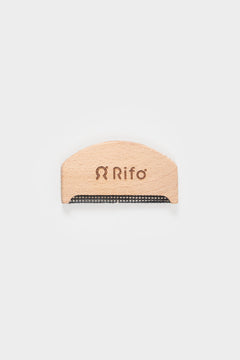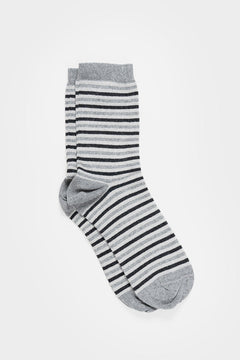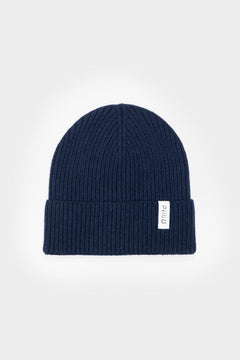Le coton est sans aucun doute la matière la plus répandue au monde. Il est utilisé pour la production de t-shirts, jeans, sous-vêtements, mais aussi pour les tissus d'ameublement et domestiques. Mais quel est le plus durable : le coton biologique ou le coton recyclé pour l’habillement ? C’est justement sa diffusion qui en fait l’une des principales causes depollution mondiale. Sa production nécessite en effet des cultures intensives, caractérisées par une forte utilisation de pesticides ; tandis que sa transformation consomme d’énormes quantités d’eau et de colorants. En plus de cela, il faut considérer que la majorité des cultures de coton se trouvent dans des pays où l’exploitation de la main-d’œuvre est fréquente, comme l’Inde ou le Pakistan. Quand on parle de mode éthique et durable, on rencontre souvent des termes comme coton biologique, dont la culture a un impact moindre sur l’environnement. Dans cet article de blog, nous aimerions parler du coton biologique et approfondir la différence entre un coton vierge bio et le coton recyclé, pour essayer de comprendre lequel des deux représente le choix le plus durable.

La culture du coton
Commençons par la source de cette matière : la plante. Les plantations de coton nécessitent un climat chaud et sec, elles sont donc historiquement très répandues en Asie, en Afrique et en Amérique. Il suffit de penser à l’image des esclaves noirs d’Amérique penchés pour récolter les boules de coton en Virginie. Le coton est en effet obtenu en filant la ouate, c’est-à-dire les boules de fibres qui, une fois le fruit sec, servent à protéger les graines de la plante. La demande mondiale énorme de coton pousse à des cultures vastes et intensives qui appauvrissent le sol et polluent, augmentant souvent aussi l’incidence de cancers dans la population locale. Pour se faire une idée de ce que représente la culture du coton dans le monde, prenons l’exemple des États-Unis : ici, le coton est cultivé sur 12 millions d’acres, une surface plus grande que toute la plaine du Pô. Sur ces surfaces, d’énormes tracteurs, voire des avions, dispersent des pesticides et produits chimiques afin de garantir des récoltes abondantes et efficaces.
Les caractéristiques du coton biologique
 Comme pour toutes les cultures certifiées biologiques, celle du coton bio est menée dans le respect de l’environnement et des travailleurs. Elle est également certifiée par des standards reconnus au niveau international. Ce sont des organismes indépendants qui délivrent ces certifications, après avoir vérifié tout le processus, de la culture à la production. Pour savoir si le t-shirt que vous achetez est en coton bio, vérifiez l’étiquette et cherchez l’une de ces certifications reconnues :
Comme pour toutes les cultures certifiées biologiques, celle du coton bio est menée dans le respect de l’environnement et des travailleurs. Elle est également certifiée par des standards reconnus au niveau international. Ce sont des organismes indépendants qui délivrent ces certifications, après avoir vérifié tout le processus, de la culture à la production. Pour savoir si le t-shirt que vous achetez est en coton bio, vérifiez l’étiquette et cherchez l’une de ces certifications reconnues :- Coton biologique OCS
- Coton biologique OCS 100
- Coton biologique GOTS
Avantages du coton biologique et du coton recyclé
Résumons les avantages de l’utilisation du coton biologique :
- Réduction de la pollution globale
- Moindre consommation d’eau et d’énergie
- Utilisation de graines naturelles, non OGM
- Réduction des risques de maladies liées à l’inhalation de substances nocives
- Protection de la santé des travailleurs et rejet de l’exploitation du travail des enfants
- Préservation de la pureté des fibres
Tous ces avantages concernent cependant une infime partie du coton mondial. Le coton bio ne représente que 1% de la production mondiale. Même si son impact est moindre comparé au coton conventionnel, il reste cultivé, donc son empreinte écologique n’est pas nulle. Comment l’éliminer totalement ? Le seul coton qui ne nécessite pas de culture est celui qui existe déjà, le coton recyclé, issu de déchets industriels ou de vêtements usagés. Cela permet de recycler la fibre au moins une fois. 
Le coton recyclé est produit à partir de déchets textiles, qui sont ramenés à l’état de fibre, puis à nouveau filés. Il s’agit donc d’un processus mécanique, sans utilisation d’eau, contrairement au coton vierge. Même pour la teinture, l’usage de l’eau peut être évité, les déchets étant parfois triés par couleur, ou teints une fois filés. Inconvénient ? Un seul : la fibre est plus courte et doit être renforcée avec une faible part de coton vierge ou de fibres synthétiques pour garantir sa résistance.
En conclusion
Chez Rifò, nous expérimentons continuellement le potentiel du coton recyclé. Avec les bons ajustements, le coton recyclé peut égaler les performances du coton vierge, comme dans le cas de nos serviettes Rifò composées à 80 % de coton recyclé et 20 % de coton naturel. Nos artisans partenaires nous garantissent d’excellents résultats. Nous l’avons aussi testé pour créer les tissus de nos T-shirts, les polos en piqué pour femmes, les serviettes de plage, les écharpes, et même un robuste tissu en denim recyclé. Parfois, le vocabulaire de la mode durable peut prêter à confusion : biologique, naturel, durable, organique... Pour éviter le greenwashing, il faut s’informer et savoir reconnaître les avantages de chaque tissu. En gardant à l’esprit que la production de nouvelles matières est toujours dommageable pour l’environnement, tandis que le recyclage et la réutilisation sont la véritable clé d’un avenir durable. C’est pourquoi Rifò a décidé de créer une collection de vêtements en fils recyclés. Découvrez-la dans notre boutique en ligne !








